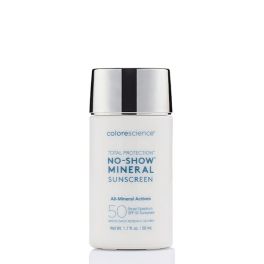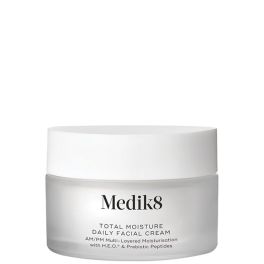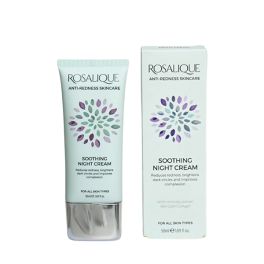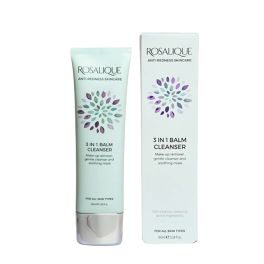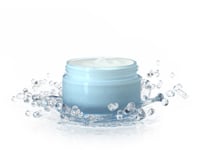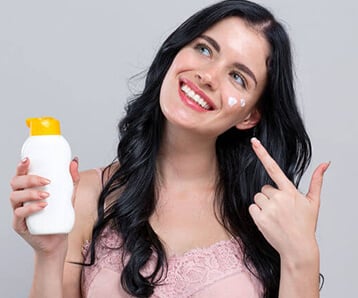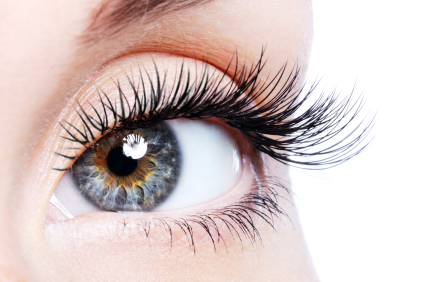The Skin Structure & Function Posted on 22 Nov 2018
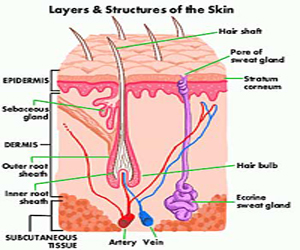
The skin is the largest organ in the body, comprising about 15% of body weight. The total skin surface of an adult ranges from 12-20 square feet. In terms of chemical composition the skin is about 70% water, 25% protein and 2% lipids.
What are the 3 main layers of skin?
The skin consists of three main layers - Epidermis, Dermis and Subcutaneous tissue.
The Epidermis
The epidermis is the top most layer of the skin. The epidermis has no blood supply but it's nourished by the blood vessels in the dermis. The thickness of the epidermis is usually 0.5-1mm but is dependant upon the site (for example, it's very thick on the soles of feet and palms of hands). The epidermis consists of three types of cells – Keratinocytes, Melanocytes & Langerhans cells.
Keratinocytes, the cells that make the protein keratin are the predominant type of cells in the epidermis (makes the skin waterproof & tough). At the lowermost portion of the epidermis are immature, rapidly dividing keratinocytes. As they mature, keratinocytes lose water, flatten out and move upwards, eventually at the end of their life cycle, they reach the uppermost layer of the epidermis called stratum corneum. Stratum corneum consists mainly of dead keratinocytes, hardened protein (keratins) & lipids, forming a protective crust.
Dead cells from stratum corneum continuously slough off and are replaced by new ones coming from below. The skin completely renews itself every 3-5 weeks.
Another significant group of cells in the epidermis are melanocytes, the cells producing melanin, the pigment responsible for skin tone and colour. This darkens the skin and protects you from strong sunlight. The darker the skin the more melanin you have.
Langerhans cells are essentially a fore post of the immune system in the epidermis. They prevent unwanted foreign substances from penetrating the skin. The condition of the epidermis determines how fresh your skin looks and how well your skin absorbs and holds moisture. Wrinkles however, are formed in lower layers.
The Dermis
The dermis is the middle layer of the skin. It's the thickest of the skin layers and comprises of a tight, sturdy mesh of collagen & elastic fibres. Both of them are important proteins, as collagen is responsible for structural support and elastin for the resilience of the skin.
The key type of cells in the dermis is fibroblasts, which make collagen, elastin and other structural molecules. The proper function of fibroblasts is highly important for overall skin health.
The dermis also contains capillaries (tiny blood vessels) and lymph nodes (depots of immune cells) the blood vessels carry oxygen and nutrients and lymph nodes for protecting it from micro organisms. It's responsible for the skin's pliability and mechanical resistance and is also involved in the regulation of the body temperature. The dermis supplies the avascular epidermis with nutrients by means of its vascular network. It contains sense organs for touch, pressure, pain and temperature.
The dermis also contains sebaceous glands, sweat glands, hair follicles and also nerve and muscle cells.
Sebaceous glands, located around hair follicles, are of particular importance for skin health as they produce sebum, an oily protective substance that lubricates and waterproofs the skin and hair. When sebaceous gland produce too little sebum, as is common in older people, the skin becomes excessively dry and more prone to wrinkling. Conversely, over production or improper composition of sebum, as is common in adolescents, often leads to acne.
The dermis is the layer responsible for the skin's structural integrity, elasticity and resilience. Wrinkles arise and develop in the dermis. The sweat gland is a long, coiled, hollow tube of cells. The coiled part in the dermis is where sweat is produced, and the long portion is a duct that connects the gland to the opening or pore on the skin's outer surface and some also open into hair follicles.
There are two different kinds of sweat glands – eccrine glands and apocrine glands.
Eccrine glands are found all over the body, particularly on the palms of the hands, soles of feet and forehead. The glands become active, responding to an increase in body temperature, either through physical exercise or as a direct result of an increase in the temperature of the environment and also emotional stress.
Apocrine glands are larger than eccrine glands and are found mainly in the axillae, the groin and around the nipples. They typically end in hair follicles rather than pores. Sweat from apocrine glands also contain proteins & fatty acids, which makes it thicker and gives it a milkier or yellowish colour.
Hair has two separate structures – the follicle (root) in the skin and the shaft we see. The shaft is made up of dead, hard protein called keratin. The shape of the hair shaft determines whether the hair is curly, wavy or straight. Below the surface of the skin is the hair root, follicle leading down to the hair bulb. At the base of the bulb is the papilla (small clump of tissue) the papilla has a network of capillary blood vessels to supply oxygen, energy and amino acids needed for growth. Hair is formed by rapid divisions of keratinocytes cells in the papilla. As the new cells are formed the old ones are pushed upwards from the base. The cells come away from their source of nutrition, the cells harden, die and are converted to keratin.
The Subcutaneous layer
Subcutaneous tissue is the innermost layer of the skin located under the dermis consisting of connective tissue and fat molecules. Subcutaneous fat acts as a shock absorber and heat insulator protecting underlying tissues from cold and mechanical trauma.
The loss of subcutaneous tissue, often occurring with age, leads to facial sagging and wrinkles.
Functions of the skin:
• Protects the body against physical injury.
• Provides some protection for the body against numerous pathogenic microbes and chemical agents.
• Helps to restrict fluid and water loss.
• Helps to prevent excessive water absorption by imparting water resistance to the skin.
• Is involved in temperature regulation of the body.
• Is the body’s main sensory organ for temperature, pressure, touch and pain.
• Provides protection from UV light.
• Plays a key role in metabolism, including vitamin D synthesis and biotransformation of some chemicals.
• Lack of vitamin D can lead to soft bones and many associated problems.













